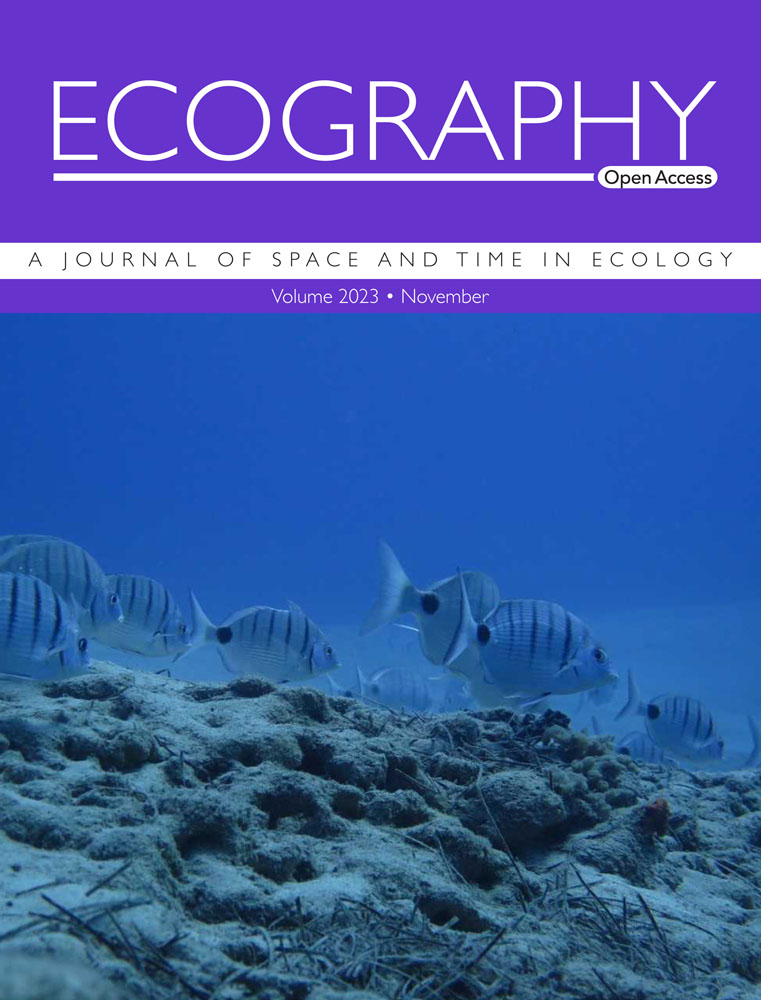Effects of phytoplankton species distribution on particulate organic carbon dynamics along a coastal gradient
IF 5.4
1区 环境科学与生态学
Q1 BIODIVERSITY CONSERVATION
引用次数: 0
Abstract
Phytoplankton communities affect carbon dynamics worldwide, strongly influencing the quality and quantity of organic carbon in coastal ecosystems. Yet, we still know little about the impacts of changing phytoplankton community composition on the potential carbon pathways in estuaries and coasts. Here, we sampled 25 sites along a coastal salinity and nutrient gradient, collecting water for water chemistry and phytoplankton for community composition analyses. For each site, we determined phytoplankton taxonomic diversity and used Bayesian joint species distribution models considering species interactions, taxonomic relatedness and traits to identify key environmental factors driving phytoplankton community composition. Subsequently, we used structural equation modelling to establish direct and indirect links between the identified key environmental factors, taxonomic diversity (richness and evenness) and particulate organic carbon (POC). We found that the phytoplankton distribution along the estuarine gradient was mainly driven by changes in salinity. Increasing salinity (ranging between 0.8–6.4) benefited motile species and reduced the phytoplankton richness, which resulted in a decrease in POC concentration. This indirect effect of salinity on POC was stronger than a direct one, highlighting the mediating role of phytoplankton richness. This emphasizes the importance of diversity regulating coastal biogeochemical processes and suggests that future changes in salinity might shift coastal carbon dynamics due to changes in phytoplankton community composition.浮游植物种类分布对沿海梯度颗粒有机碳动态的影响
浮游植物群落影响着全球范围内的碳动态,强烈影响着沿海生态系统中有机碳的质量和数量。然而,我们对浮游植物群落组成变化对河口和海岸潜在碳途径的影响知之甚少。在这里,我们沿着沿海盐度和营养梯度取样了25个地点,收集了水的化学成分和浮游植物的群落组成分析。在每个站点,我们确定了浮游植物的分类多样性,并使用贝叶斯联合物种分布模型考虑物种相互作用,分类相关性和性状,以确定驱动浮游植物群落组成的关键环境因素。随后,我们利用结构方程模型建立了所确定的关键环境因子、分类多样性(丰富度和均匀度)和颗粒有机碳(POC)之间的直接和间接联系。研究发现,沿河口梯度的浮游植物分布主要受盐度变化的驱动。盐度升高(0.8 ~ 6.4)有利于活动物种,降低了浮游植物丰富度,导致POC浓度降低。盐度对POC的间接影响强于直接影响,突出了浮游植物丰富度的中介作用。这强调了多样性调节沿海生物地球化学过程的重要性,并表明未来盐度的变化可能会由于浮游植物群落组成的变化而改变沿海碳动态。
本文章由计算机程序翻译,如有差异,请以英文原文为准。
求助全文
约1分钟内获得全文
求助全文
来源期刊

Ecography
环境科学-生态学
CiteScore
11.60
自引率
3.40%
发文量
122
审稿时长
8-16 weeks
期刊介绍:
ECOGRAPHY publishes exciting, novel, and important articles that significantly advance understanding of ecological or biodiversity patterns in space or time. Papers focusing on conservation or restoration are welcomed, provided they are anchored in ecological theory and convey a general message that goes beyond a single case study. We encourage papers that seek advancing the field through the development and testing of theory or methodology, or by proposing new tools for analysis or interpretation of ecological phenomena. Manuscripts are expected to address general principles in ecology, though they may do so using a specific model system if they adequately frame the problem relative to a generalized ecological question or problem.
Purely descriptive papers are considered only if breaking new ground and/or describing patterns seldom explored. Studies focused on a single species or single location are generally discouraged unless they make a significant contribution to advancing general theory or understanding of biodiversity patterns and processes. Manuscripts merely confirming or marginally extending results of previous work are unlikely to be considered in Ecography.
Papers are judged by virtue of their originality, appeal to general interest, and their contribution to new developments in studies of spatial and temporal ecological patterns. There are no biases with regard to taxon, biome, or biogeographical area.
 求助内容:
求助内容: 应助结果提醒方式:
应助结果提醒方式:


